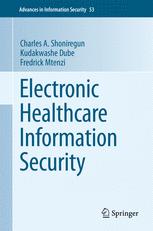

Most ebook files are in PDF format, so you can easily read them using various software such as Foxit Reader or directly on the Google Chrome browser.
Some ebook files are released by publishers in other formats such as .awz, .mobi, .epub, .fb2, etc. You may need to install specific software to read these formats on mobile/PC, such as Calibre.
Please read the tutorial at this link: https://ebookbell.com/faq
We offer FREE conversion to the popular formats you request; however, this may take some time. Therefore, right after payment, please email us, and we will try to provide the service as quickly as possible.
For some exceptional file formats or broken links (if any), please refrain from opening any disputes. Instead, email us first, and we will try to assist within a maximum of 6 hours.
EbookBell Team

0.0
0 reviewsThe adoption of Information and Communication Technologies (ICT) in healthcare is driven by the need to contain costs while maximizing quality and efficiency. However, ICT adoption for healthcare information management has brought far-reaching effects and implications on the spirit of the Hippocratic Oath, patient privacy and confidentiality. A wave of security breaches have led to pressing calls for opt-in and opt-out provisions where patients are free to choose to or not have their healthcare information collected and recorded within healthcare information systems. Such provisions have negative impact on cost, efficiency and quality of patient care. Thus determined efforts to gain patient trust is increasingly under consideration for enforcement through legislation, standards, national policy frameworks and implementation systems geared towards closing gaps in ICT security frameworks. The ever-increasing healthcare expenditure and pressing demand for improved quality and efficiency in patient care services are driving innovation in healthcare information management. Key among the main innovations is the introduction of new healthcare practice concepts such as shared care, evidence-based medicine, clinical practice guidelines and protocols, the cradle-to-grave health record and clinical workflow or careflow. Central to these organizational re-engineering innovations is the widespread adoption of Information and Communication Technologies (ICT) at national and regional levels, which has ushered in computer-based healthcare information management that is centred on the electronic healthcare record (EHR).